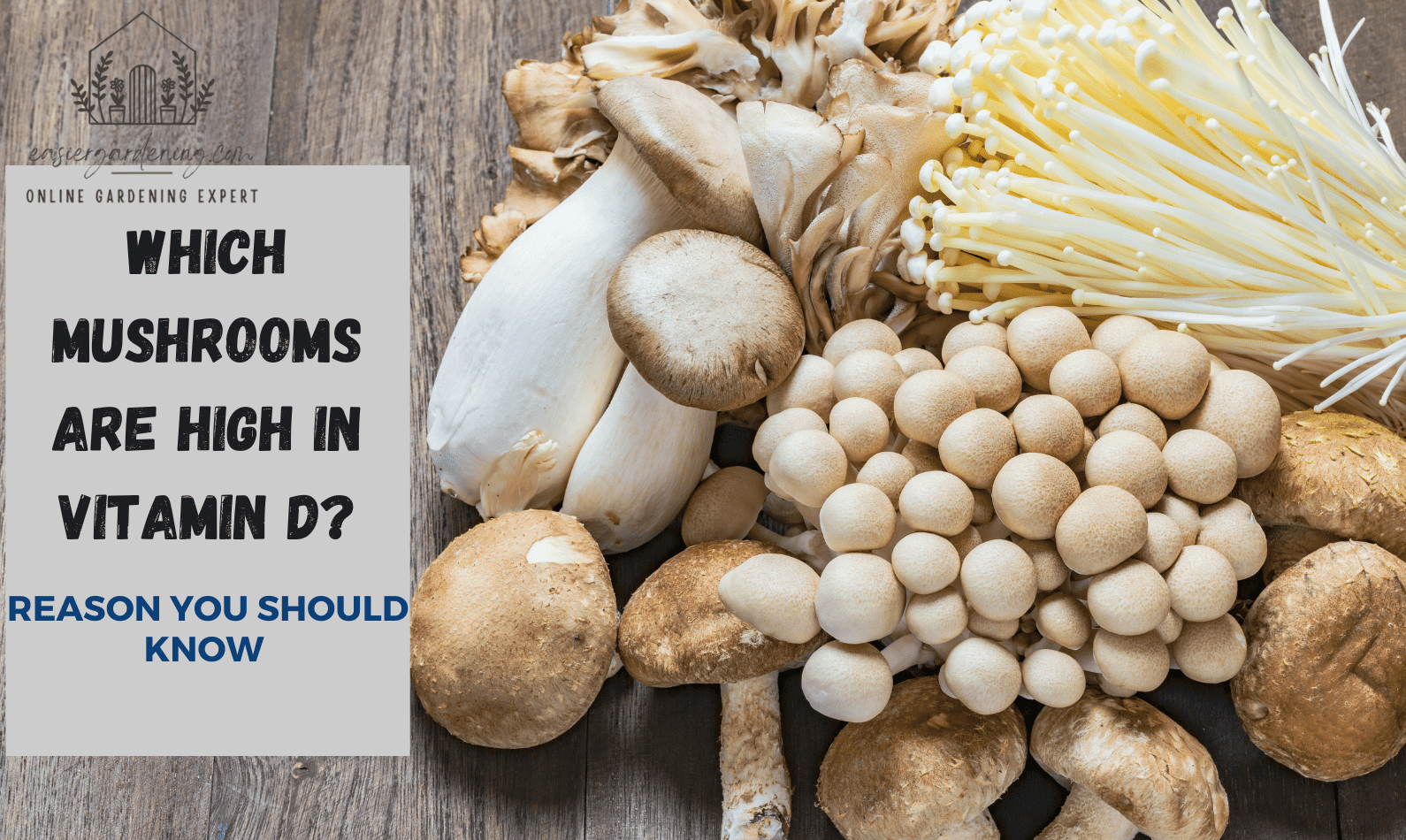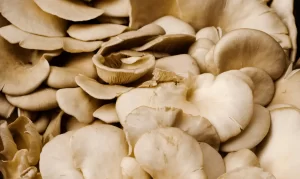Which Mushrooms Are High in Vitamin D? Do you need a little more vitamin D in your diet? Why not experiment with mushrooms, both wild and purchased? We’ll look at mushrooms that are rich in vitamin D in this article.
Vitamin D is a necessary vitamin that strengthens the immune system and plays an important role in human metabolism. Did you know that tasty mushrooms are a source of vitamin D and that exposing them to sunlight will naturally increase their levels?
We’ll also show you how to use a simple UV-B reptile lamp to quickly boost Vitamin D levels in store-bought mushrooms.
Contents
- Ideal Vitamin D Levels for People
- Which Mushrooms Are High in Vitamin D?
- How to Raise Vitamin D Levels in Mushrooms?
- Vitamin D Deficiency Symptoms
- Where Do I Get Vitamin D in Wild?
- Mushrooms Contain what kind of vitamin D?
- How Mushrooms Become Vitamin D-rich?
- What Is the Best Vitamin D Type for People?
- What Is the Difference Between Vitamin D2 and Vitamin D3?
- Which Is Better: Mushroom Vitamin D or Vitamin D Supplement?
- Conclusion: Which Mushrooms Are High in Vitamin D?
Ideal Vitamin D Levels for People
Button mushrooms exposed to midday sunlight have a Vitamin D2 content of 10 micrograms (ug) per 100 grams.
The Recommended Daily Allowance (RDA) for Vitamin D is 15 micrograms, according to the National Institutes of Health (NIH) (2). You can get 15 micrograms of vitamin D per day by eating 150 grams (about 5 ounces or 4 to 5 mushrooms) of light-exposed button mushrooms.
The average grocery store back of mushrooms costs about $3 for 8 ounces. Store-bought mushrooms are cultivated in the dark and contain just 1 ug of Vitamin D per 100 grams. To get the 15 ugs of Vitamin D needed daily, you’d need to eat 1500 grams (over six 8 oz packs) of store-bought mushrooms.
You’d need a lot less if you had access to sun-exposed button mushrooms. You will get your perfect daily Vitamin D intake by eating two 8 oz packs of sun-exposed mushrooms every three days.
Which Mushrooms Are High in Vitamin D?
Mushrooms with the Highest Vitamin D Concentrations, Ranked from Most to Least
Oyster mushrooms exposed to UV-B light had the highest concentrations of Vitamin D2, followed by Shiitake and then button mushrooms. Penny bun mushrooms had the highest levels of Vitamin D2 naturally, followed by chanterelles.
Fresh mushrooms, such as button, oyster, and shiitake mushrooms, contained the least Vitamin D2.
How to Raise Vitamin D Levels in Mushrooms?
Allow them to be exposed to sunlight in the middle of the day during the summer! This study conducted the experiment on a variety of common mushrooms (button, shiitake, oyster) (1).
The majority of those mushrooms begin with 1 ug vitamin D2 per 100 grams of mushroom. When they were exposed to either heavy summer sun or UV lamps, their D2 levels increased to about 10 ug/100g. The same study discovered that exposing dried mushrooms to UV lamps increased their Vitamin D2 content.
According to the report, 60 to 90 minutes of UV-B radiation at 1.14 W/m2 at 28 °C is needed (1). The reptile light in the illustration below uses 3 watts of power to emit 1.3 W/m2 of UV-B.
Read more about What Mushrooms are Safe to Eat?
How can you Accomplish this at Home?
- Purchase any fresh or dried mushrooms – the study used button, shiitake, and oyster mushrooms.
- Purchase a UV lamp that emits UV-B rays. UV-B was found to be more effective at raising Vitamin D2 than UV-A or UV-C.
- Place the mushrooms on a tray and slice them.
- For 60 minutes, expose sliced mushrooms to UV-B light.
- Take advantage of your free vitamin D2!
Vitamin D Deficiency Symptoms
The most serious consequence of vitamin D deficiency is the development of rickets in infants (2). This also happens in young pets and animals fed vitamin D-deficient diets. This was specifically addressed by requiring vitamin D fortification of milk and milk products. Rickets causes soft tissues and deformities in the bones. It has the potential to paralyze your child.
Adults with low vitamin D levels can exhibit the following symptoms:
- Bone weakness (osteomalacia)
- Bone ache
- Muscle weakness
Frequently Answered Questions
Where Do I Get Vitamin D in Wild?
Vitamin D levels in wild mushrooms exposed to sunlight would be highest. Despite growing in the understory of trees, chanterelles had relatively high levels of Vitamin D. We’d expect full-sun mushrooms like Giant Puffballs to be high in vitamin D, but there’s no evidence to back it up.
This hypothesis is based on research performed on store-bought mushrooms. After being exposed to 60 to 90 minutes of UV-B radiation, button, shiitake, and oyster mushrooms erupted with vitamin D.
Morel mushrooms contain 5 ug/100 g of Vitamin D, according to the USDA database. It’s not perfect, but it’s five times better than store-bought white, shiitake, or oyster mushrooms. Morels in the store usually forage.
Mushrooms Contain what kind of vitamin D?
The D2 type of vitamin D can be found in mushrooms, fungi, and yeast (1). The D3 type is found in animals.
Oily fish is the best source of vitamin D. They also have D3 and D4 forms.
How Mushrooms Become Vitamin D-rich?
When developing mushrooms are exposed to midday sunshine, their vitamin D status improves. They can also be increased by sun-drying mushrooms after they have been harvested.
What Is the Best Vitamin D Type for People?
Vitamin D2 (from mushrooms) and Vitamin D3 (from animal foods or sunlight on human skin) have also been shown to help avoid rickets (2). As a result, the NIH considers them to be functionally equivalent. Both types have sufficient bioavailability to increase blood vitamin D concentrations to optimal levels.
What Is the Difference Between Vitamin D2 and Vitamin D3?
The side chains of vitamin D2 and D3 molecules are very chemically. D2 is derived from mushrooms and yeast. D3 is derived from animals, mostly fatty fish. When the skin is exposed to sunlight, it produces D3.
As previously mentioned, both D2 and D3 increase blood levels of Vitamin D and have been shown to prevent rickets. As a result, the NIH finds these to be sufficient sources of vitamin D.
Which Is Better: Mushroom Vitamin D or Vitamin D Supplement?
Vitamin D supplements contain both D2 and D3 types of vitamin D. It’s better to be safe than sorry!
Mushroom Vitamin D is only available in D2 form. Again, as previously said, the NIH considers D2 and D3 to be the same. Both increase vitamin D levels in the blood to avoid rickets and other symptoms of Vitamin D deficiency.
Read more about How Hard is it to Grow Mushrooms?
Conclusion: Which Mushrooms Are High in Vitamin D?
Mushrooms are not only high in vitamin D, but they also provide many opportunities for health maintenance and improvement. If you expose cultivated mushrooms or wild edibles to light, both become vitamin D-rich after exposure. Mushrooms are unquestionably superfoods!



